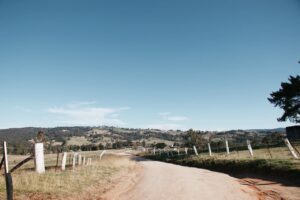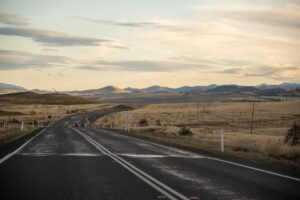8 Ways To Stay Safe When Road Tripping Through NSW
Australia is the home of the classic old-school road trip. And with travel budgets tightening, driving through the long winding roads of NSW remains an affordable and exciting trip option.
If you’re ready to embark on one of the 19 road trips in NSW you’ve never heard of before, here are eight essential safety tips to keep in mind.
Table of Contents
Toggle-
Get Comprehensive Car Insurance
Whether you’re visiting from overseas or are an NSW resident, the most important tip is to get comprehensive car insurance before hitting the road. Travelling through NSW without insurance is not a risk you should be willing to take.
Comprehensive car insurance will cover damages to your car from causes other than a collision.
This includes damage from:
- Contact with animals
- Fire
- Falling objects, including rocks, hail, or branches
- Natural disasters, including earthquakes, floods, and hurricanes
- Broken windshields
- Vehicle/vehicle parts theft
When you’re driving long distances and are exposed to natural elements, the chances of these accidents are slightly higher than during average city driving.
The reality of road-tripping is that unexpected things can happen, and it’s always better to be safe than sorry. So if you’re planning on exploring the wilderness and zooming down long country roads, we highly recommend getting comprehensive car insurance with Rollin Insurance to stay safe.
Your vehicle will be the most important thing when on the road, so you want to ensure it’s up for the job. Before you finalise your trip, make sure your servicing is up to date so any mechanical issues can be resolved beforehand. Check your fluids and tire pressure, ensure you have enough gas, and always carry spare tires in case you get a flat in a remote location.
-
Build A First Aid Kit
Before embarking on an adventure, always carry a first aid kit to take care of yourself in case of an accident. This is even more vital during road trips as you might not always have access to medical services.
As a rule, the longer your trip and the more isolated your location, the more equipment you should bring. Some essentials to carry include:
- Small scissors
- Gauze
- Painkillers
- Tweezers
- Antiseptic wipes
- Plasters
- Surgical tape
- Antibacterial creams
These are just the bare minimum — if you have the time and resources, here are 25 items to put in your travel first aid kit.
-
Share The Driving

It’s sometimes hard to wrap your head around just how big Australia truly is — and if you’re planning on driving through NSW’s long-winded roads, you’re in for quite the journey.
Owing to Australia’s size, it’s always recommended to share the driving between multiple people. Ideally, you should swap drivers every 2-3 hours, especially if the driving involves long stretches of road. Try and plan your trip to break up the driving into smaller stretches.
If you’re tripping solo, make sure you include plenty of rest stops — never drive when extremely sleepy or too tired. Fatigue can be a real risk and sneak up on you quickly when driving. Ideally, you should stop before the signs of fatigue start settling in. But if you have tired eyes, are yawning, or find it difficult to concentrate on the road, then it’s definitely time to take a break.
-
Preload Directions
If you’re relying on online navigation to find your way, you may find yourself caught in an area with poor or no reception. To avoid this, you should pre-load regions of the map and input routes into your sat-nav to navigate even with no signals. You don’t want to be caught in the middle of nowhere with no idea what turn to take next!
-
Remain In Contact
If you’re heading into the remote countryside or isolated locations, leaving a copy of your itinerary with a friend or family member is a good idea.
Decide in advance how often you will check in with them and what they should do if they don’t hear from you. Let them know your planned routes, stops, and destinations, and try to stay in touch whenever possible. These safety precautions are especially important if you’re tripping solo. While it’s more than likely that nothing will go wrong, it’s always good to be prepared for assistance if an accident ever happens.
-
Check Weather & Road Conditions
Before you leave each stop, make sure you’re checking road and weather conditions to ensure you don’t drive into hazards. Check government websites or local information centres for the latest updates, and postpone your plans if the conditions seem risky.
-
Avoid Driving At Dawn and Dusk
While Australia is known and loved for its abundant wildlife, animals can be a serious hazard when on the road.
To stay safe, avoid driving at dawn and dusk when animals are most active. Also never drive late at night when visibility is really low. If you absolutely must, make sure your headlights are on, and sound your horn regularly when driving through thick vegetation.
Remember, nighttime on isolated roads is a lot darker than you might expect! You should always aim to settle into an offgrid campsite, motel, or stop point before the sun goes down.
